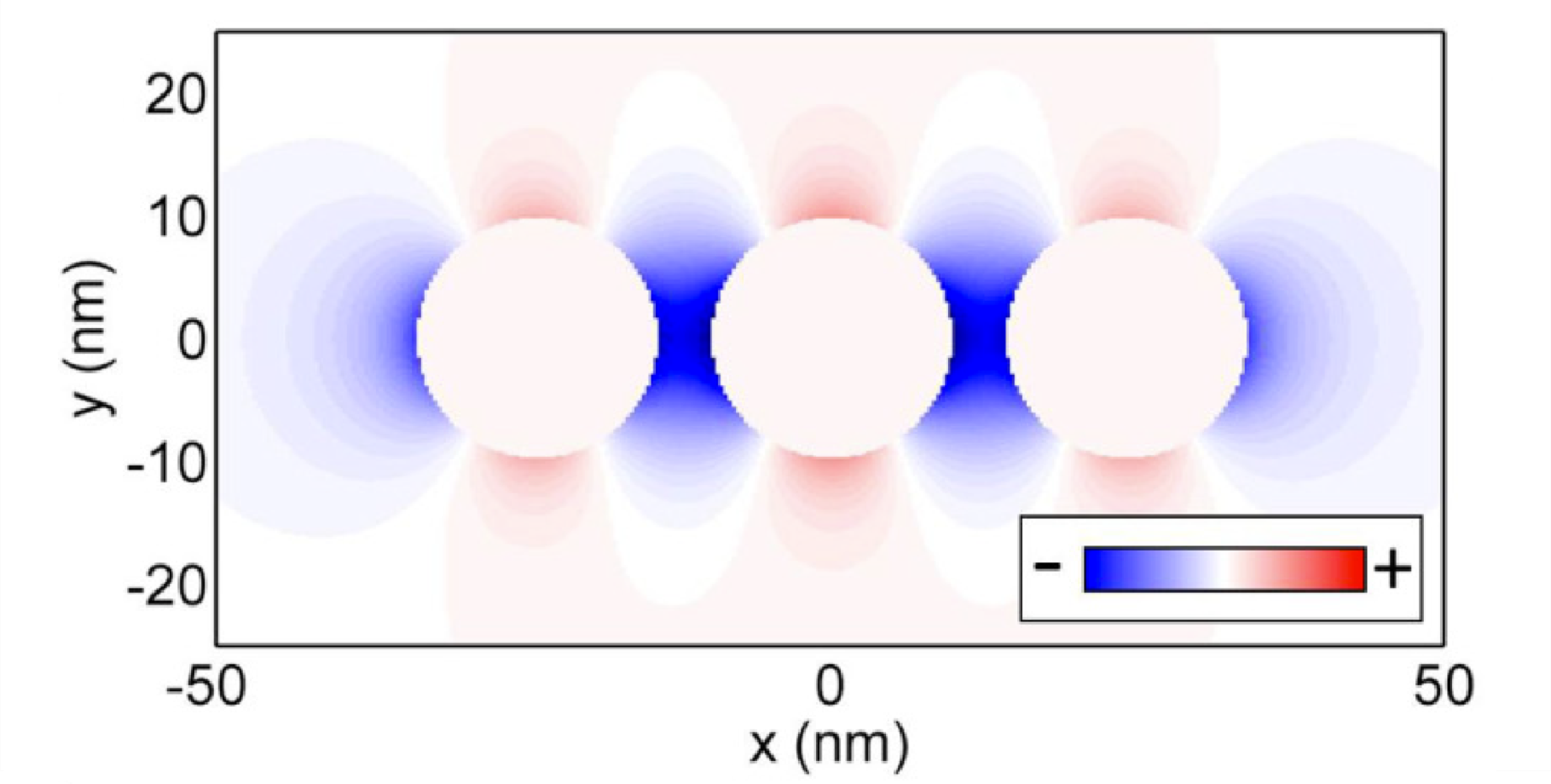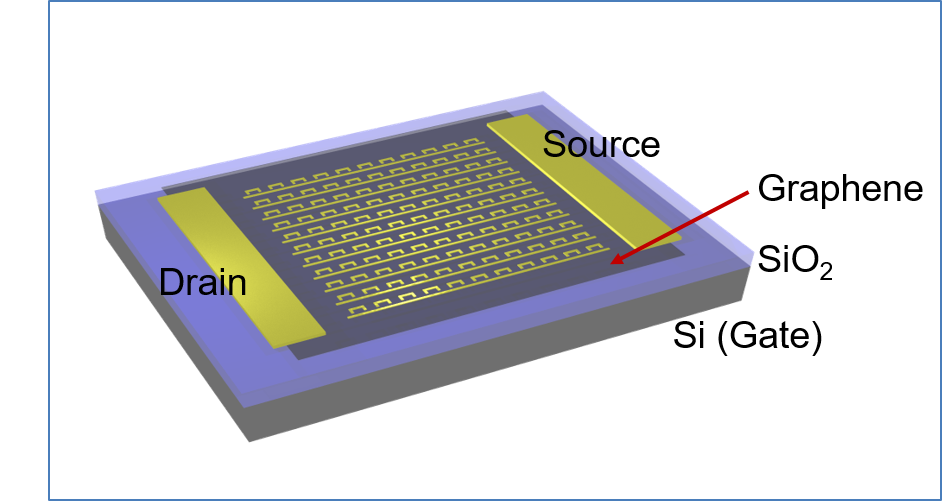Research Areas
Alternative alloys for plasmonics


Conventionally, propagating surface plasmons supported by mono-metallic thin films (typically made of gold or silver) have been extensively studied and used for various applications. In this project, using numerical and experimental tools, we study the behaviour of surface plasmons on alloy thin films. The effect of various system parameters like composition, process temperature and film morphology on the surface plasmon resonance are being investigated. We are also interested in developing in-situ optical spectroscopy approaches that can be correlated with information from techniques like S/TEM and SEM.
Associated students:
- N. J. L. Sivani (Ph.D.)
Collaborators:
- Dr. Subhradeep Chatterjee (MSME, IITH) - Phase separation in milled Ag-Cu thin films
- Dr. Sairam Malladi (MSME, IITH) - In-situ TEM studies
Related publications
- Vivek C. Peddiraju, Pravallika Bandaru, Shourya Dutta-Gupta, and Subhradeep Chatterjee, Substrate interaction mediated control of phase separation in FIB milled Ag-Cu thin films, APL Materials, 12(1), 011101 (2024).
- Pravallika Bandaru, Saswata Bhattacharyya, and Shourya Dutta-Gupta, Insights into propagating surface plasmons in Ag–Cu alloy thin films: Enhancement of spin angular momentum of light, Journal of Applied Physics, 132, 183101 (2022).
- Pravallika Bandaru, Govind Ummethala, Sai Rama Krishna Malladi, and Shourya Dutta-Gupta, Microstructure Dictates the Behavior of Plasmons in Nanostructured Ag-Cu Alloy Films, Journal of Physical Chemistry C, 126 (37) 15915–15923 (2022).
- A. Farhang, B. Abasahl, S. Dutta-Gupta, A. Lovera, P. Mandracci, E. Descrovi and O. J. F. Martin, Broadband wide-angle dispersion measurements: Instrumental setup, alignment, and pitfalls, Review of Scientific Instruments, 84, p. 033107 (2013).
Growth and assembly of nanostructures


Assembly of gold nanoparticles on un-patterned and patterned surfaces is one of the promising fabrication pathways that can lead to large scale plasmonic substrates with sub-10 nm gaps. We are currently studying the effect of different parameters on the assembly of gold nanoparticles (with different morphologies) on both different substrates. One of our goals in this project is to achieve low-cost assembly of these particles with sub-10 nm gaps with superior biosensing performance.
Associated students:
- Jaya Kumar P. (Ph.D.)
- Arka Jyoti Roy (Ph.D.)
Collaborators:
- Dr. Suhanya D. (Chemical Engineering, IITH) - Microfluidic platforms
Related publications
-
Eshita Mukherjee, Jayakumar Pillanagrovi, Dhruv Bhatnagar, and Shourya Dutta-Gupta, In situ optical spectroscopy for monitoring the assembly of gold nanoparticles for plasmonic applications, Journal of Applied Physics, 133, 073101 (2023)
-
P. Jayakumar and Shourya Dutta-Gupta, Controlled assembly of gold nanoparticles in resonant gold nanoapertures for SERS applications, Nanotechnology, 33, 485301 (2022).
Surface enhanced Raman scattering (SERS) based biosensors

The electromagnetic field enhancement in the vicinity of plasmonic nanostructures can be used to amplify the Raman scattering of molecules and this is termed as surface enhanced Raman scattering (SERS). We are currently developing plasmonic SERS substrates for the real-time detection of different biologically relevant analytes.
Associated students:
- Jagathpriya L. M. (Ph.D.)
- Reshma I. R. (Ph.D.)
Related publications
-
Jagathpriya L. M., Jayakumar Pillanagrovi, and Shourya Dutta-Gupta, Tailoring cavity coupled plasmonic substrates for SERS application, Nanotechnology, 34, 335501 (2023).
-
Eshita Mukherjee, Jayakumar Pillanagrovi, Dhruv Bhatnagar, and Shourya Dutta-Gupta, In situ optical spectroscopy for monitoring the assembly of gold nanoparticles for plasmonic applications, Journal of Applied Physics, 133, 073101 (2023)
-
P. Jayakumar and Shourya Dutta-Gupta, Controlled assembly of gold nanoparticles in resonant gold nanoapertures for SERS applications, Nanotechnology, 33, 485301 (2022).
-
Mohsen Bahramipanah, Shourya Dutta-Gupta, Banafsheh Abasahl, and Olivier J. F. Martin, Realization of Cavity-Coupled Plasmonic Device with Enhanced Sensitivity and Figure-of-Merit, ACS Nano, 9 (7), pp 7621-7633 (2015).
Structural colors based on self-assembly of dielectric particles

In nature, various species exhibit vibrant colors owing to the periodic arrangement of nano- and micro-structures on their surface. We are currently developing such structurally colored substrates for various sensing applications.
Associated students:
Numerical modelling of plasmonic nanostructures

Modes of a plasmonic system provide significant insight into the properties of the structure. Specifically, we developed an eigenmode analysis based on the Green’s tensor approach, which can help in understanding both the bright and dark modes in a cluster of plasmonic nanoparticles. This analysis has been used to understand the second harmonic generation (SHG) from the surface of the nanoparticles in the cluster.
Collaborators:
Dr. Balaji Iyer V. S. (Chemical Engineering, IITH) - Modelling of large scale plasmonic structures
Related publications
- Shourya Dutta-Gupta and Olivier J.F. Martin, An insight into the eigenmodes of plasmonic nanoclusters based on Green’s tensor method, JOSA B, 32 (2), pp 194-200 (2015). doi:10.1364/JOSAB.32.000194.
- Jeremy Butet, Shourya Dutta-Gupta and Olivier J.F. Martin, Surface second-harmonic generation from coupled spherical plasmonic nanoparticles: Eigenmode analysis and symmetry properties, Physical Review B, 89, pp 245449 (2014). doi:10.1103/PhysRevB.89.245449.
2d-Material integrated metasurface devices


We are interested in developing active plasmonic devices by integrating various plasmonic metasurfaces with 2d materials like graphene, MoS2, etc.. This integration enables the dynamic tuning of the plasmon resonance by application of a back gate voltage to graphene. Such devices can be used for controlling the intensity, phase and polarization of the reflected or transmitted beams.
Related publications
- M. Jung, S. Dutta-Gupta, N. Dabidian, et al., Polarimetry using graphene-integrated anisotropic metasurfaces, ACS Photonics, 5, 4283-4288 (2018).
- Shourya Dutta-Gupta, et. al., Electrical Tuning of the Polarization State of Light Using Graphene-Integrated Anisotropic Metasurfaces, Phil. Trans. R. Soc. A., 375 (20160061) (2017).
- N. Dabidian#, S. Dutta-Gupta#, I. Kholmanov, et al., Experimental Demonstration of Phase Modulation and Motion Sensing Using Graphene-Integrated Metasurfaces, Nano Letter, 16 (6), p. 3607-3615 (2016). (# - Equal contribution).